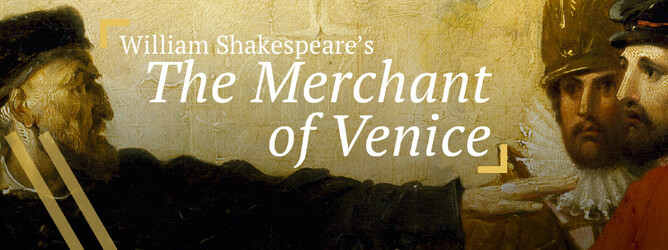Welcome back to another blog post! Today, we will be discussing Shakespeare’s comedic play ‘Merchant of Venice’ published in 1623. Shakespeare’s portrayal of antisemitism, particularly for the protagonist, directly correlates with the HSC common module ‘Texts and Human experiences’. Shakespeare intentionally uses his play form which allows for a visual representation of the antisemitism towards the Jewish collective amid the Elizabethan era. The dramatic and theatrical storytelling allows Shakespeare to construct the protagonist, Shylock, as a Jewish individual who is anomalous to his collective Christian society. Contemporary audiences challenge Shakespeare’s comedic expression of Shylock as a ‘villain’, instead reinterpret him as a ‘victim’. Regardless of whether Shylock is interpreted as a villain or victim, he undergoes an ostracising and disenfranchising human experience, thus audiences can sympathise with Shylock’s pursuit for justice.
Below is a relevant body paragraph, which further embodies this idea with relevant quotes and analysis.
TOPIC SENTENCE
One key theme that is directly associated with the Texts and Human Experiences rubric is Shylock's individual human experience of prejudice in his Elizabethan zeitgeist.
In ‘Merchant of Venice’ Shylock draws upon the enduring human experience of prejudice, however interpretations of Shylock’s character are contextually contingent upon religio-cultural norms. Thus modern audiences are able to understand the protagonist as a victim of alienation.
Shakespeare reflects Elizabethan culture by paralleling Venetian societies' collective allegiance to a homogeneous Christian group. Therefore, this spared antisemitism towards anomalous Jewish individuals.
Example 1
Shakespeare further communicates prejudice towards Shylock through the continuous use of derogatory terms, which further alienate Shylock from his surrounding collective. Therefore, contextual tension regarding religious purity was epitomised through the antisemitism that plagued societies.
Shakespeare’s construction of animal imagery in derogatory terms used against Shylock, “cut throat dog,” highlights his dehumanisation as he is reduced to a vicious and merciless beast further accentuating the prejudice enforced against him. However, contemporary audiences in a post-holocaust society are aware of the dangers of prejudicial thinking and sympathise with Shylock’s description.
Example 2
The theme of prejudice is further continued through the racial vilification towards Judaism is evident through Shylock’s statement, “sufferance is the badge of all our tribe.” This metaphor portrays the catharsis and pathos which displays the intergenerational trauma. Thus, further highlighting the ostracism placed upon Jewish individuals. The inclusive language of “our” manifests the marginalised collective, whilst referencing “tribes” displays a sense of belonging and identity.
Example 3
Shylock continues to affirm the prejudice which deeply affects him, especially in the indignities from the Christian collective. “Hath not a Jew eyes, hath not a jew hands, organs, dimensions, passions.” This persuasive monologue’s cumulative list of synecdoches evokes pathos from the audience, mitigating the ideological divides of the time. Shylock's listing his individual qualities portrays the extent ostracised individuals will go to experience justice.

